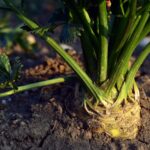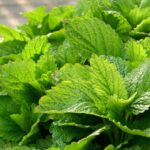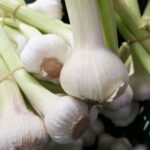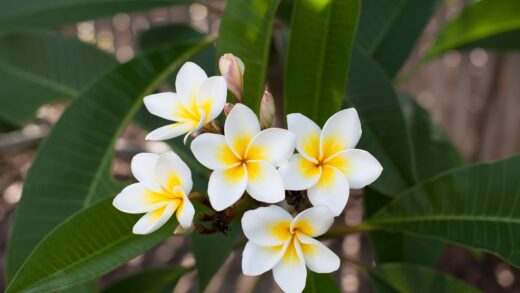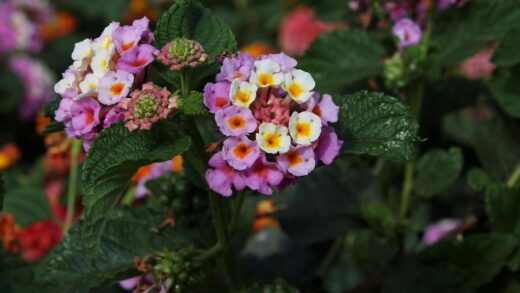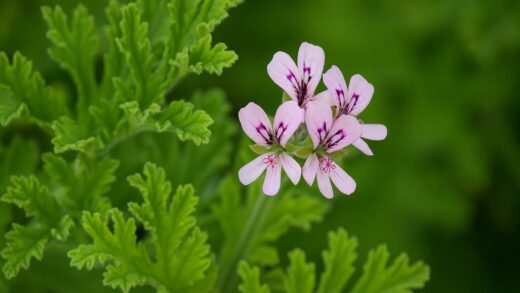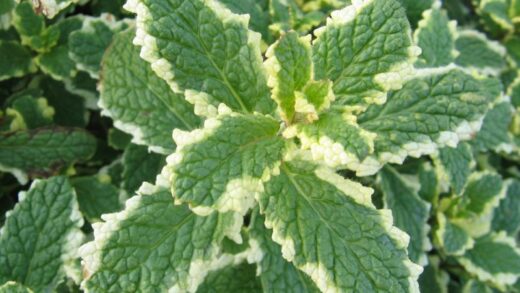The Abyssinian gladiolus, also known as the peacock orchid, fragrant gladiolus, or Acidanthera, is a plant originating from East Africa, renowned for its enchanting beauty and intoxicating aroma. Its elegant white flowers with a dark purple center lend an exotic atmosphere to any garden. Given its tropical origin, overwintering outdoors in our climate presents a serious challenge and, in most cases, leads to the plant’s demise. Therefore, it is of crucial importance that the frost-sensitive corms are lifted in autumn and stored under suitable conditions until the following spring planting, to ensure the plant’s flowering and survival year after year.
Introduction to the Abyssinian Gladiolus and the Importance of Overwintering
The Abyssinian gladiolus (Gladiolus murielae) is a cormous perennial belonging to the Iridaceae family. It captivates with its graceful appearance, star-shaped, nodding flowers, and a characteristic, sweet fragrance. The blooming period generally occurs in the latter half of summer, during August and September; by this time, many other plants have finished flowering, making it a valuable ornamental feature in the late-summer garden. The flowers appear individually or in small clusters on long stems and are also excellent as cut flowers, filling the home with their special scent. The leaves are narrow, sword-shaped, light green in color, and further enhance the overall appearance of the plant.
In the plant’s native habitat, the mountainous regions of Ethiopia, mild winters and hot summers are characteristic. For this reason, it does not tolerate our temperate continental winters, especially severe frosts and persistently damp, cold soil. The freezing of the corms or their rotting in cold, damp soil is almost guaranteed if they are left outdoors. Successful overwintering is, therefore, not just an option but a necessity if one wishes to continue enjoying this special plant the following season. Careful overwintering ensures the preservation of the corms’ energy reserves, enabling them to sprout vigorously in spring.
If overwintering is neglected, the most likely scenario is the complete loss of the plant. Even during milder winters, if the soil does not freeze deeply, the corms can begin to rot due to the combined effect of excessive moisture and cold, or at least weaken to such an extent that they cannot flower the following year. During overwintering, not only is the plant protected from frost damage, but there is also an opportunity to inspect the corms and remove any diseased or damaged specimens. In this way, the spread of diseases is prevented, and it is ensured that only healthy, vigorous corms are returned to the soil in spring.
It is important to note that although the Abyssinian gladiolus belongs to the Gladiolus genus, its requirements and appearance differ slightly from the common, large-flowered hybrid gladioli. However, the overwintering procedure shares many similarities with that of other frost-sensitive cormous plants, such as dahlias or begonias. The key to success lies in the correct timing of lifting, careful preparation of the corms, and ensuring optimal storage conditions. These steps will be detailed later so that everyone can master this important horticultural skill.
More articles on this topic
Optimal Timing for Lifting the Corms
Lifting the corms of the Abyssinian gladiolus should be done before the first hard frosts. This usually occurs in late October or early November, but it is essential to monitor current weather conditions. It is not advisable to start this work too early, as the plant continues to store important nutrients in the corms through its leaves even after flowering, preparing for the next year’s growth. As long as the foliage is green, this process actively continues and contributes to increasing the size and vitality of the corms.
The most ideal time for lifting is when the plant’s leaves begin to yellow and dry, but before the first hard ground frosts set in. Yellowing leaves signal that the growing season is ending and the corms have entered dormancy, preparing for the rest period. If one waits too long and the ground has already frozen, the corms can be damaged, jeopardizing the success of overwintering. A light, surface frost usually does not yet cause damage to the underground parts, but persistent sub-zero temperatures can be fatal.
For lifting, a dry, sunny day should be chosen when the soil is not too wet. This facilitates the work and reduces the risk of damaging the corms. It is more difficult to lift the corms from damp, muddy soil without damaging them, and removing the adhering soil is also more laborious. In drier conditions, the corms are easier to clean and dry faster, which is crucial for preventing rot.
One must ensure to know the exact location of the plants, especially if they are grown among other plants in a mixed bed. It can be useful to mark the stems of the Abyssinian gladiolus during the summer, for example, with a small stake or a label. This is particularly practical if the foliage has already completely dried and is difficult to identify. Careful preparation and correct timing greatly contribute to the success of overwintering and abundant flowering the following year.
More articles on this topic
Preparing the Corms for Storage
After the corms have been carefully lifted from the soil using a spading fork or spade, taking care not to damage them, the next important step is thorough preparation for winter storage. First, remove larger soil residues from the corms, but do not wash them with water, as excessive moisture can lead to rot. Cut the stems about 5-10 centimeters (2-4 inches) above the corm. This stub facilitates later handling and prevents pathogens from entering the corm through the cut surface.
The cleaned corms must then be dried for a few days, or even one to two weeks, in an airy, dry, but frost-free place. An ideal location for this could be a shed, garage, or a well-ventilated porch where air can circulate freely around them. The purpose of drying is to allow the outer layers to dry properly, thereby reducing the risk of mold and rot during storage. Spread the corms in a single layer on newspaper, a wire rack, or in a shallow box so that all sides are exposed to air.
After the drying period, carefully inspect all the corms. Remove any that are damaged, soft, moldy, or show any signs of disease. Such specimens can indeed infect healthy ones during storage. At this stage, smaller cormels (daughter corms) that have formed around the main corm are often visible. These can be gently separated from the mother corm, stored separately, and planted in spring, where they will develop into flowering plants within a few years.
Some gardeners treat the corms with fungicide powder before storage to prevent diseases. This can be particularly justified if there have been previous problems with mold or other fungal infections. The powdered fungicide should be applied in a thin layer to the corms, for example, by gently shaking them with the powder in a paper bag. This step is not mandatory but can increase the safety of overwintering, especially in more humid storage conditions.
Ensuring Ideal Storage Conditions
For carefully prepared and dried Abyssinian gladiolus corms, the next crucial step is choosing a suitable storage location and method. The ideal storage temperature is between 5 and 10 degrees Celsius (41-50 degrees Fahrenheit). In a warmer environment, the corms may start sprouting prematurely, while temperatures below freezing can damage or destroy them. It is important that the temperature during storage is relatively constant, avoiding major fluctuations.
The storage location should be dark, dry, and well-ventilated. Light can stimulate premature sprouting, and excessive humidity encourages mold and rot. An excellent storage location can be an unheated basement, a cool pantry, a frost-free garage, or an insulated shed. It is important to ensure air circulation in the room, so do not overcrowd storage containers and ventilate occasionally if the outside temperature permits.
The corms can be stored in various materials. Paper bags, cardboard boxes, or crates filled with wood shavings, peat moss, sand, or possibly perlite or vermiculite are common solutions. It is essential that the storage medium has a loose structure and can absorb excess moisture, but at the same time does not dry out the corms excessively. Place the corms in a single layer in the storage medium so that they ideally do not touch each other, thereby reducing the risk of spreading any potential infections.
During storage, at least once a month, it is advisable to check the condition of the corms. Remove them from the storage container and inspect whether there are any soft, moldy, or shriveled specimens among them. Such corms should be removed immediately to protect the other healthy ones. If the storage medium feels too damp, it should be replaced with a drier one. Regular inspection helps to detect and address any potential problems promptly, ensuring the corms are in good condition for spring.
Common Problems During Overwintering and Their Prevention
Despite the most careful preparation, problems can arise during the overwintering of Abyssinian gladiolus corms. One of the most common problems is mold, usually caused by excessively high humidity and inadequate ventilation. To prevent this, it is crucial to thoroughly dry the corms before storage and to ensure a dry, well-ventilated storage location. If mold is detected, the affected corms should be removed immediately, the others re-dried if necessary, and the storage medium replaced.
Another common problem is the drying out and shriveling of the corms. This can happen if the storage location is too warm and dry, or if the storage medium absorbs too much moisture. Although dryness is preferable to dampness, excessive water loss can weaken the corms. To avoid this, choose a cooler storage location and a storage medium (e.g., slightly damp sand, peat moss) that helps maintain the corms’ optimal moisture content without being too wet. Occasional inspection also helps to assess the situation here.
More rarely, but damage caused by rodents can also occur, especially if the storage location (e.g., shed, basement) is easily accessible to them. Mice and voles readily consume the nutrient-rich corms. To prevent this, use rodent-proof storage containers, for example, crates with wire mesh or tightly sealed plastic boxes with small ventilation holes. Placing rodent traps can also help manage the problem, but the most important thing is prevention, i.e., making the storage location rodent-proof.
It may happen that the corms start sprouting prematurely during storage. This is usually caused by too high a storage temperature or exposure to light. If this is observed, try to move the corms to a cooler and darker place. Breaking off the early sprouts is not recommended; instead, try to slow down the process by changing the conditions until spring planting. Such corms can still be saved, but ensure that the sprouts are not damaged before planting.
Spring Preparation and Planting of the Corms
After the long winter rest, as spring approaches, it is time to prepare the Abyssinian gladiolus corms for replanting. Usually in late April or early May, after the last ground frosts have passed, is the time for planting, when the soil has warmed up sufficiently. A few weeks before the planned planting, it is advisable to move the corms to a brighter, slightly warmer place (around 15-18 degrees Celsius or 59-64 degrees Fahrenheit) to encourage their awakening and sprout formation. This so-called pre-sprouting can accelerate later flowering.
During pre-sprouting, the corms can be placed in a single layer on a shallow tray, possibly on a little damp sand or peat moss, but ensure they are not standing in water. At this stage, regular inspection is also important to be able to remove any specimens that have softened or become moldy. On healthy corms, small sprout tips will soon appear, signaling that they are ready for planting. If cormels were also overwintered, they can be prepared in a similar manner.
For planting, choose a sunny, warm, and wind-sheltered spot in the garden. The Abyssinian gladiolus prefers well-drained, nutrient-rich soil. Before planting, it is advisable to loosen the soil and enrich it with compost or well-rotted manure. Plant the corms about 8-10 centimeters (3-4 inches) deep and 10-15 centimeters (4-6 inches) apart, with the tip facing upwards. They look most beautiful in group plantings, so it is advisable to plant at least 5-7 corms together.
After planting, water the soil thoroughly. During the growing season, regular watering is necessary, especially during drier periods, but avoid waterlogging. To promote flowering, it is advisable to fertilize the plants a few times during the summer with a potassium-rich liquid fertilizer. With proper care, the Abyssinian gladiolus will reward us again with its stunning flowers and intoxicating aroma in the latter half of summer, confirming the effort put into its overwintering.








